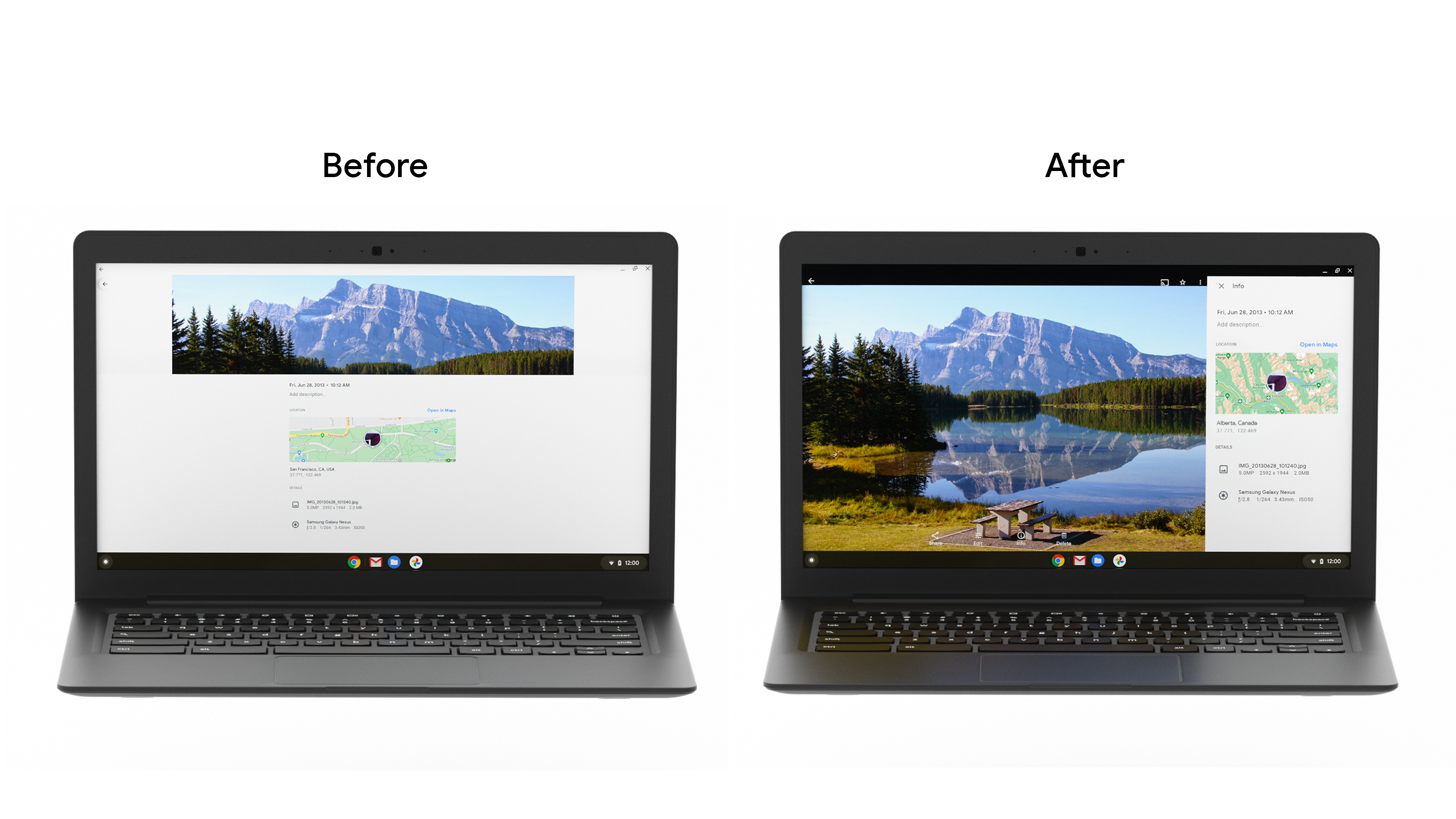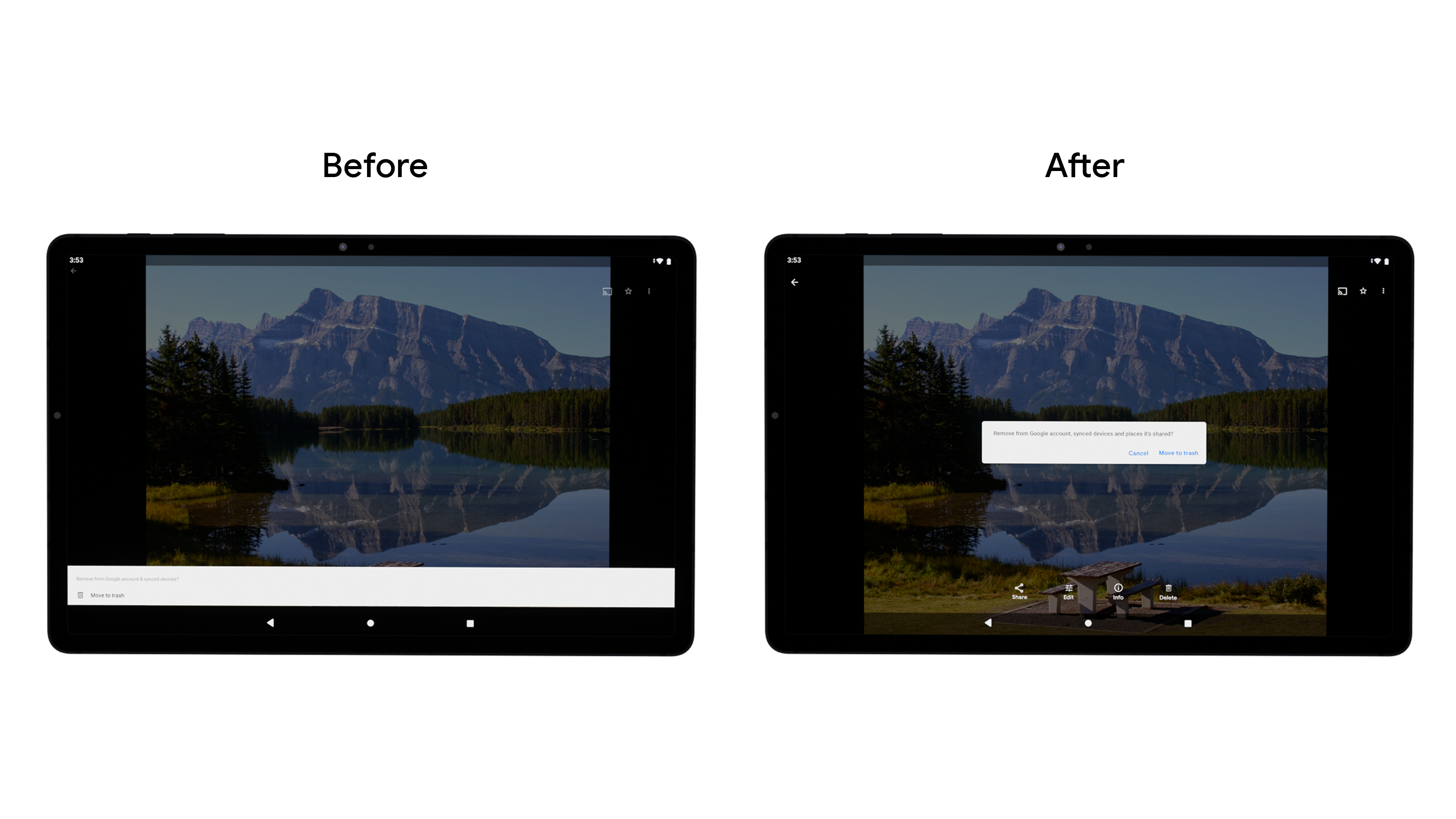Google Photos הוא הבית של הזיכרונות שלכם, וצוות הפיתוח שלו מאמין שאנשים צריכים ליהנות מהזיכרונות האלה בכל המכשירים. כדי לוודא שהתכונות של האפליקציה פועלות היטב בטאבלטים עם Android, במכשירים מתקפלים ובמכשירי ChromeOS, הם השקיעו בפיתוח פריסות רספונסיביות בכל המסכים.
מה הם עשו
צוות הפיתוח של Google Photos חשב איך לשנות את הפריסה שלו למסכים גדולים. הם הסתמכו על שיטות מומלצות לשיפור השימושיות ועל מחקר כדי להחליט איך לשנות את הפריסות שלהם למסכים גדולים. קודם כל, הם שיפרו את פריסת הרשת על ידי הפחתת הצפיפות כשהמסכים גדלים מעבר ל-600dp בטאבלטים, ומעבר ל-1008dp במחשבים ניידים. כך קל יותר למשתמשים לצפות בתמונות ולגלול ביניהן בגודל הגדול יותר.

לאחר מכן הם החליפו את המגירה התחתונה של חלונית המידע בסרגל צד. מכיוון שבדרך כלל משתמשים בטאבלטים ובמסכים של מחשבים שולחניים במצב לרוחב, השינוי הזה בגישה מפחית את המתיחה במסכים רחבים יותר ומשפר את הארגונומיה של האופן שבו משתמשי טאבלטים מחזיקים את המכשירים. בנוסף, הם שיפרו את תיבת הדו-שיח של הגיליון התחתון והוסיפו סרגלים אינטראקטיביים כדי להציג הודעות למשתמשים בצורה קלה יותר במסכים גדולים.

הם שינו את רכיב הניווט מסרגל תחתון לסרגל אנכי, כדי להקל על המשתמשים לנווט ולהשלים משימות. צוות Google Photos השתמש בטכנולוגיה הזו בבסיס הקוד שלו, אבל מפתחים יכולים להשתמש ברכיב החדש של Navigation rail כדי לשפר את הארגונומיה, לצמצם את המאמץ שנדרש מהמשתמשים ולהגדיל את שטח המסך באפליקציות עם גלילה אנכית.
צוות הפיתוח גם שינה את הגודל של הרשת באופן דינמי כדי לייעל את המעבר בין תנוחות שונות וגדלים שונים של מסכים, ושיפר את התמיכה שהוא מספק באביזרים כמו מקלדות ועטים אלקטרוניים. לאור הגידול במספר הצרכנים שמשתמשים במכשירי ChromeOS לצורכי פרודוקטיביות, חשוב יותר ויותר לוודא שהאפליקציות תומכות במגוון שיטות קלט, כולל מקלדת, עכבר ומסך מגע.
תוצאות
הצוות הטמיע את השינויים האלה באמצעות בדיקת A/B, והבחין בעלייה כללית ב-DAU של תכונות מוצר מרכזיות במסכים גדולים, כאשר השימוש בארכיון עלה ב-53%. צוות Google Photos ימשיך להשקיע בשיפור חוויית המשתמש בכל גדלי המסך, כדי להבטיח חוויה נהדרת בכל המכשירים.
שנתחיל?
איך מתחילים באופטימיזציה של האפליקציה למסכים גדולים יותר

